Merida, Spain is approximately two hundred miles southwest of Madrid and only a 3.5 hour ride from Lisbon. Tours of both Portugal and Spain often stop at this UNESCO World Heritage site to gaze upon the well-preserved ruins and monuments dating back to a time prior to the Christian era.
What makes Merida special among other cities on the Iberian peninsula is that it was one of the ancient Roman Empire’s most important cities and as such is home to numerous ruins. There are apparently more Roman monuments in Merida than any other Spanish municipality.
Just a short walk from the visitors center, the ruins become visible.
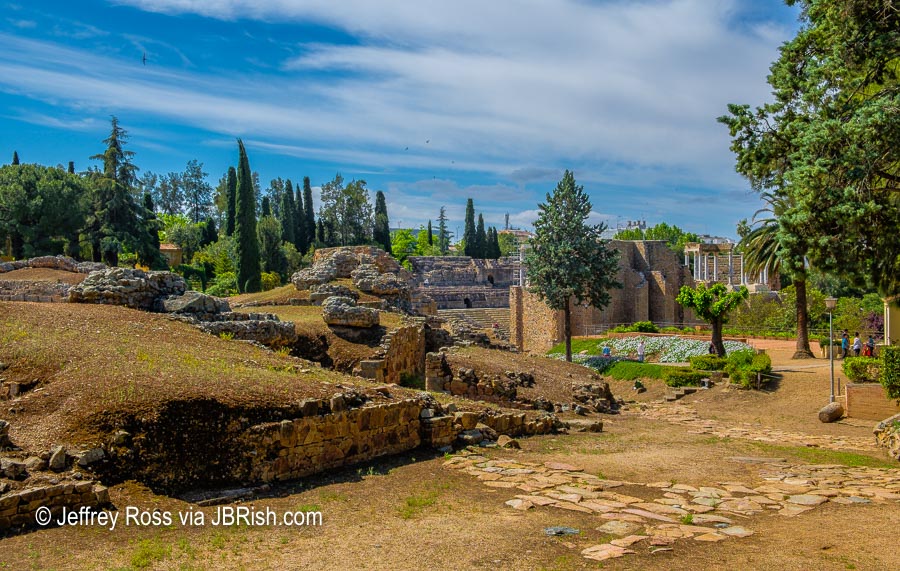
As we walked closer to the ancient structures, there were signs of the modern city which envelops this unique part of history (notice the rooftops and tower rising above the rim of the ancient walls in the background).
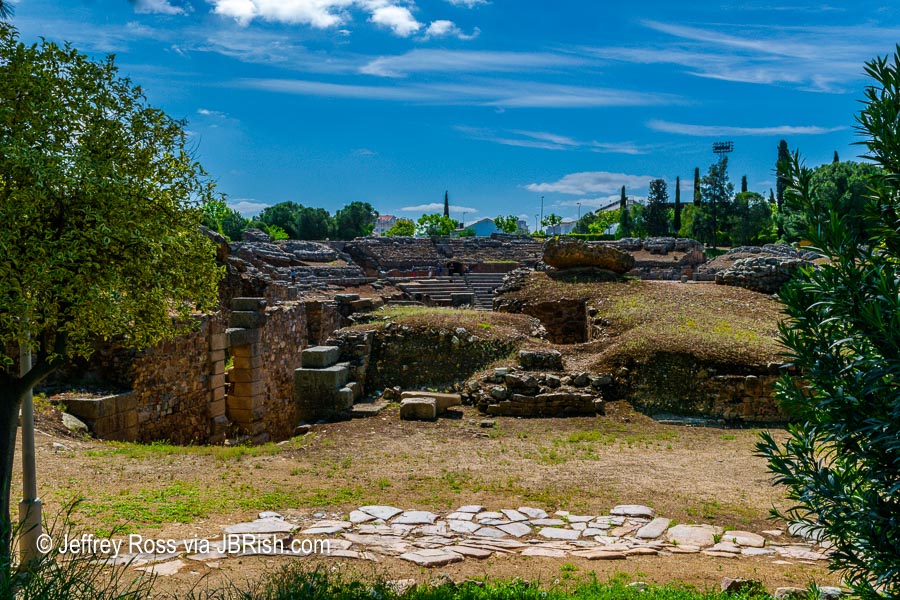
On the way to a central area, our guide pointed to a series of horizontal rocks (below) strategically placed in the middle of the “road.” Notice that there are three large structures that elevate well-above the surface. These served the purpose of our modern day speed bumps. Ancient vehicles would have to navigate these hindrances by slowing down to keep the wheels on each side of the middle obstacle.
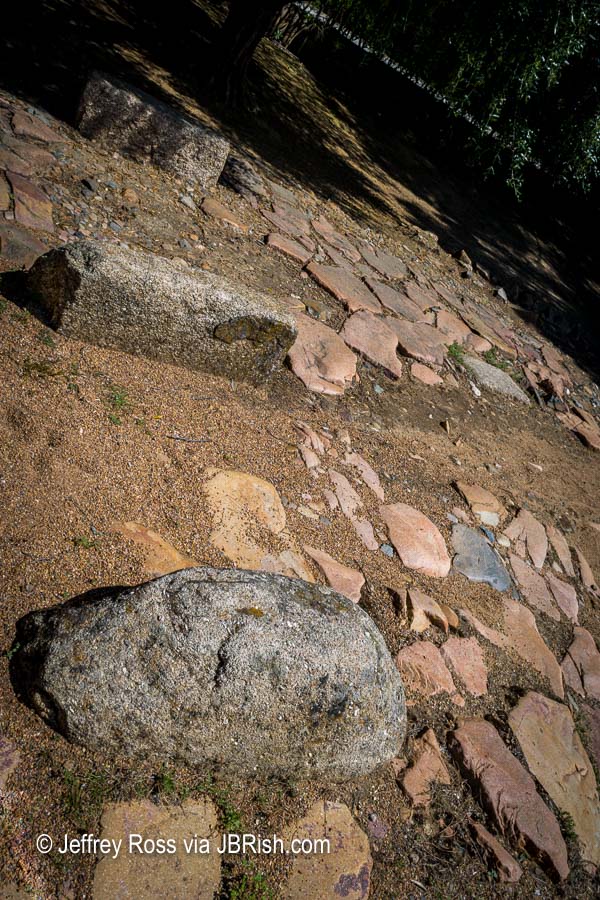
One of the two main attractions is the amphitheater. Visitor access is through the entry arch.
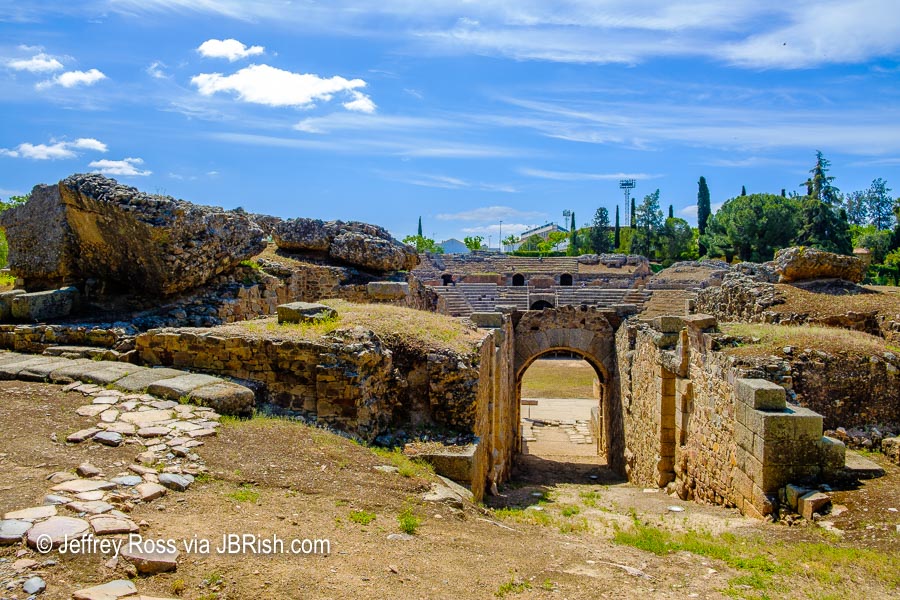
This is a view of one side of the circular area which is not fully restored.
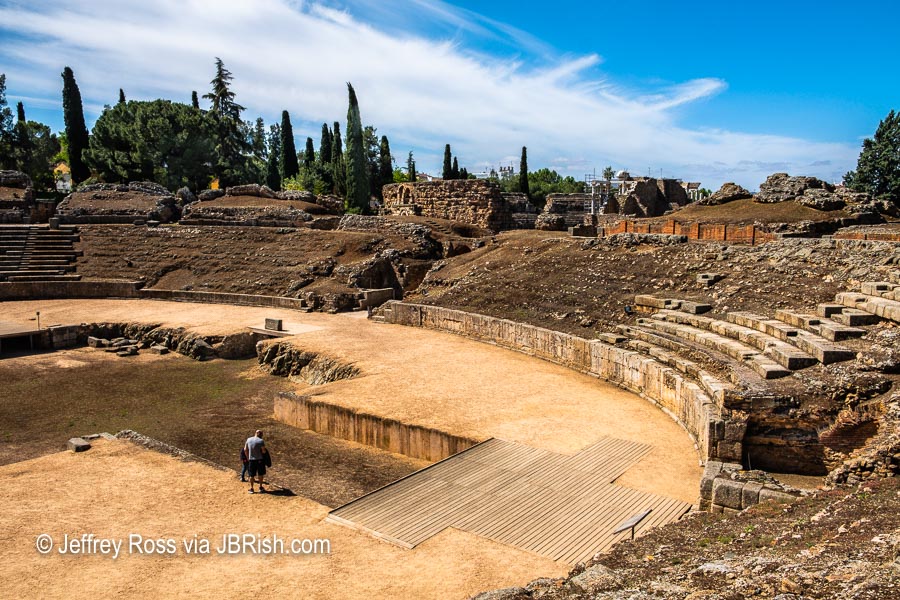
Perhaps this a better view from a bit farther away. The partially restored amphitheater shows the contrast between how it probably looked during the Roman Empire and how it was discovered; a then and now comparison.


As depicted in many Hollywood films, this structure was used for gladiatorial combat. One can imagine the combatants walking through the entrance tunnels knowing what was facing them at the other end.
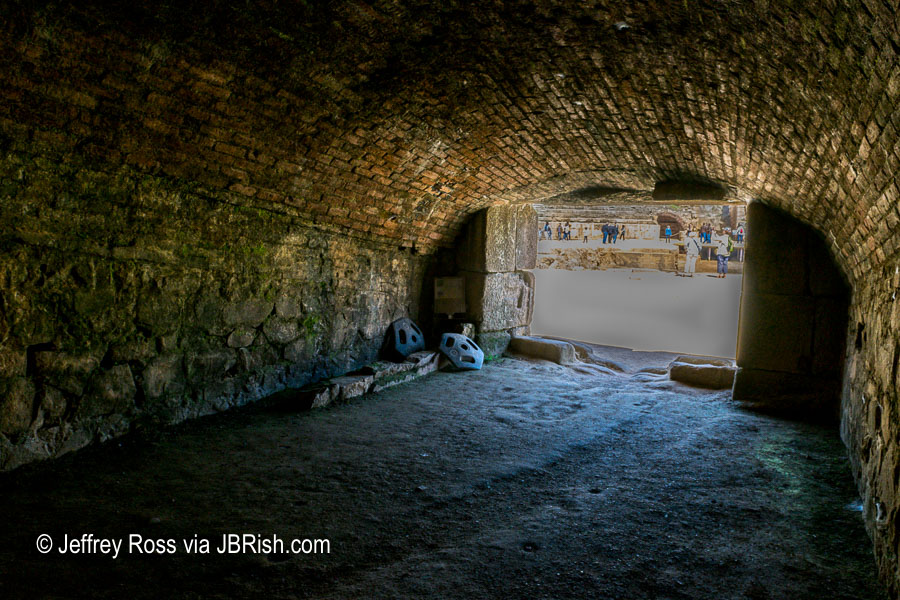

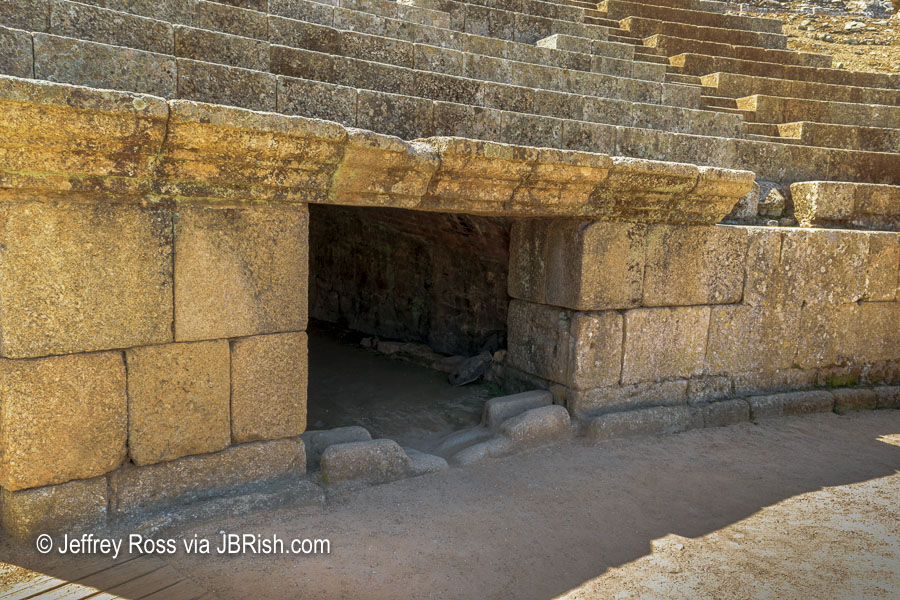
With large crowds shouting for the victory of their favorite gladiator, the throngs needed a place to take care of their biological needs. A latrine area is pictured below.

As we walked through the restoration project, we noted some stones had a large “R” chiseled onto their face. The guide explained that the “R” signified that this was not an original stone, but a reproduction.
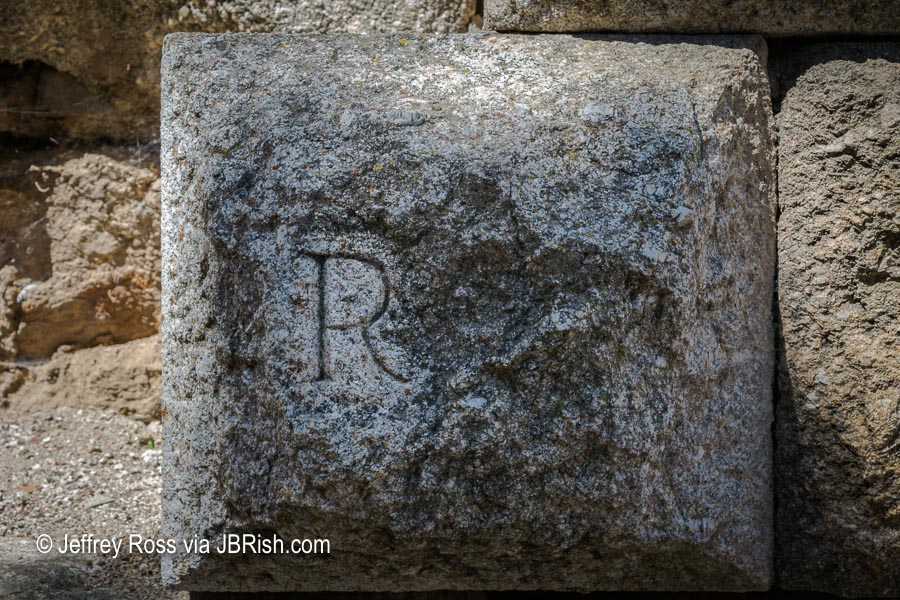
There were many original stones that have survived the centuries.
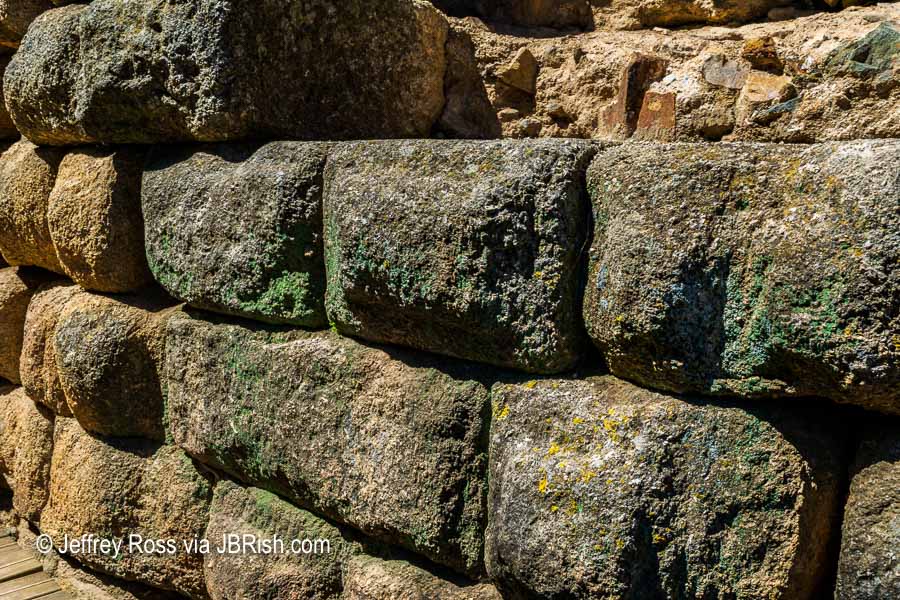
Leaving the gladiator ring, we headed to the theater which is still used for summer productions.
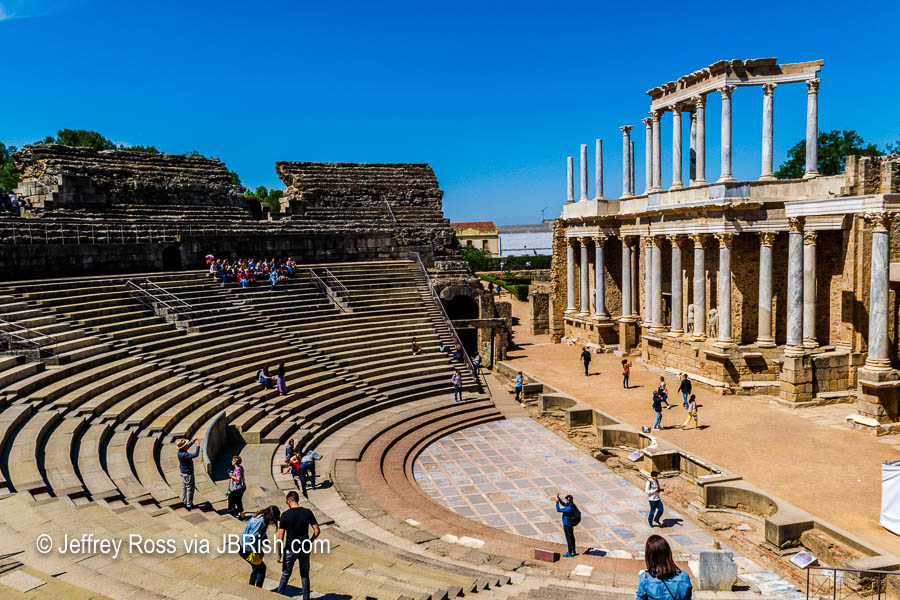
Amid the scaffolding notice the statues between the columns. These are beautiful works of art representing this historic period.

Let’s take a closer look at some of these statues
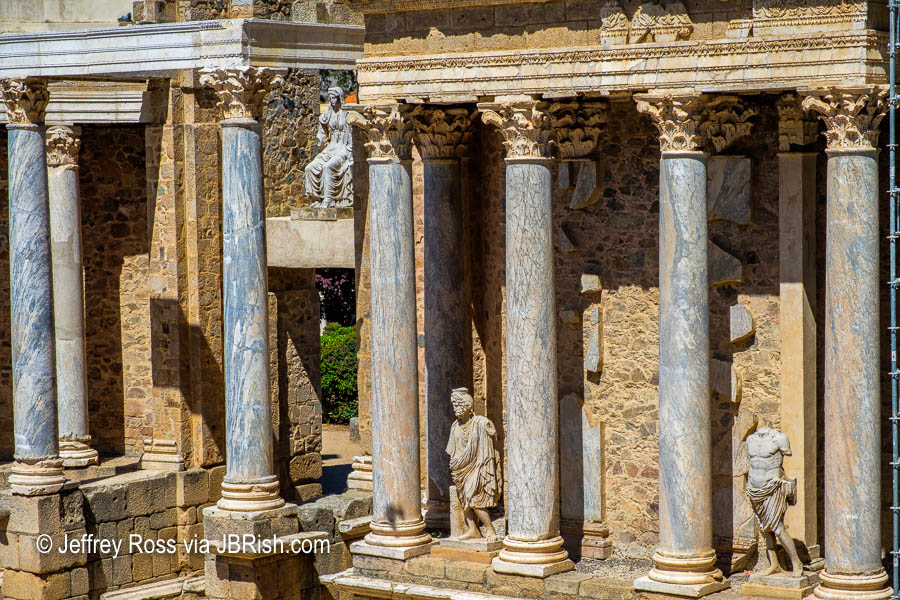
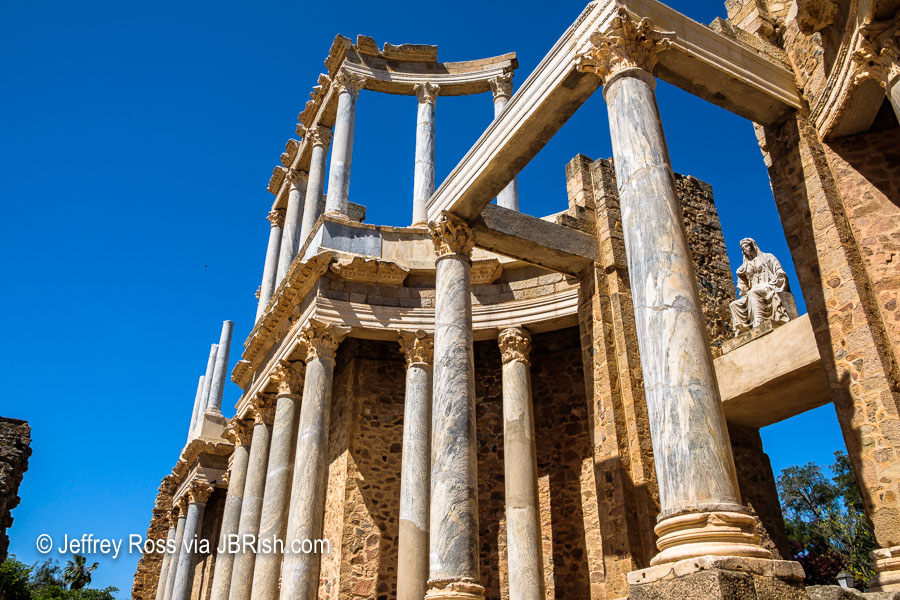
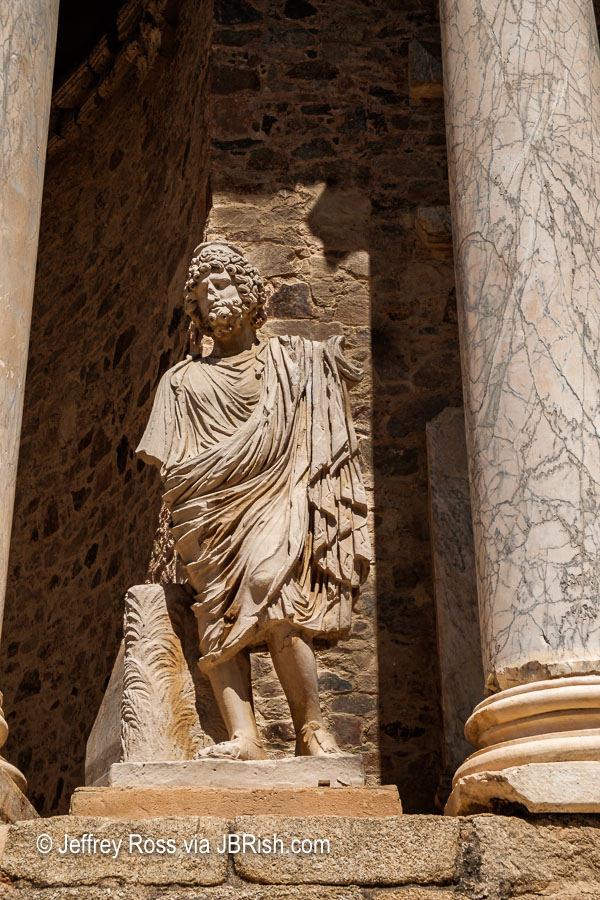
Some had names of their likeness (Tiberio Claudio Nero and Druso El Mayor)…..
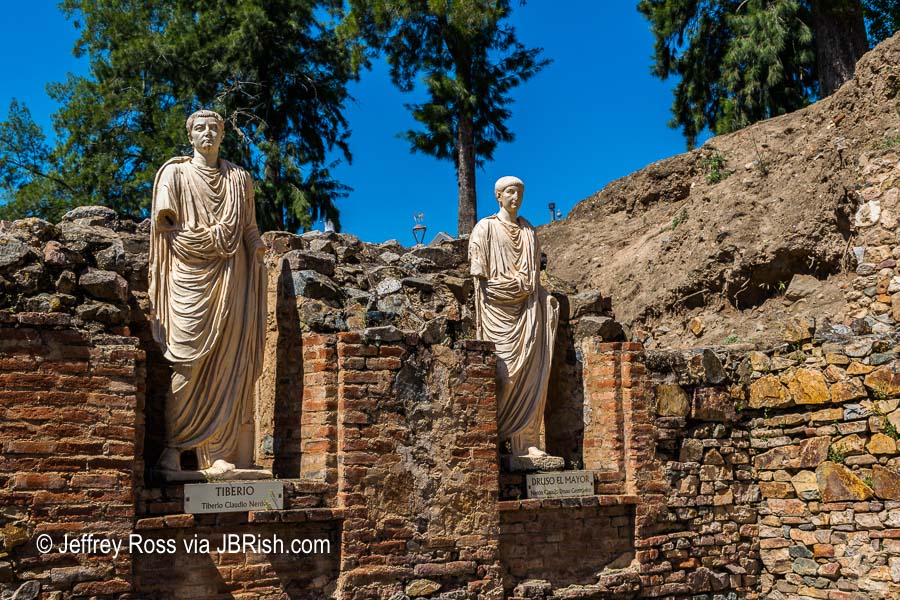
and Cayo Julio Cesar Agusto
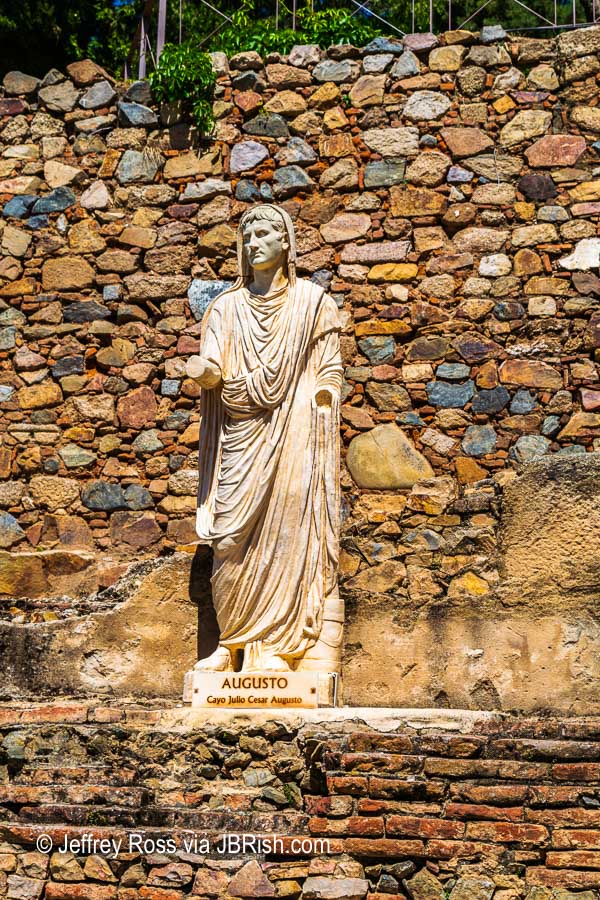
Walking through these old and almost unfathomable ruins, one cannot help being awestruck by the history and craftsmanship represented by these stone structures.
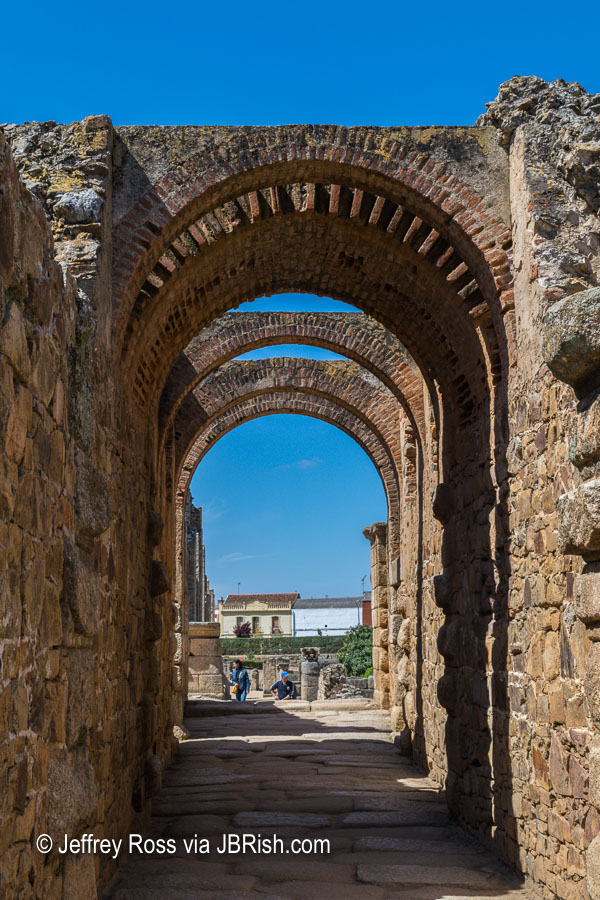
See a brief video of the Theater.
The areas immediately surrounding the ruins have been modernized with gardens, paths and water features. Rather than detract, they frame the Roman creations.
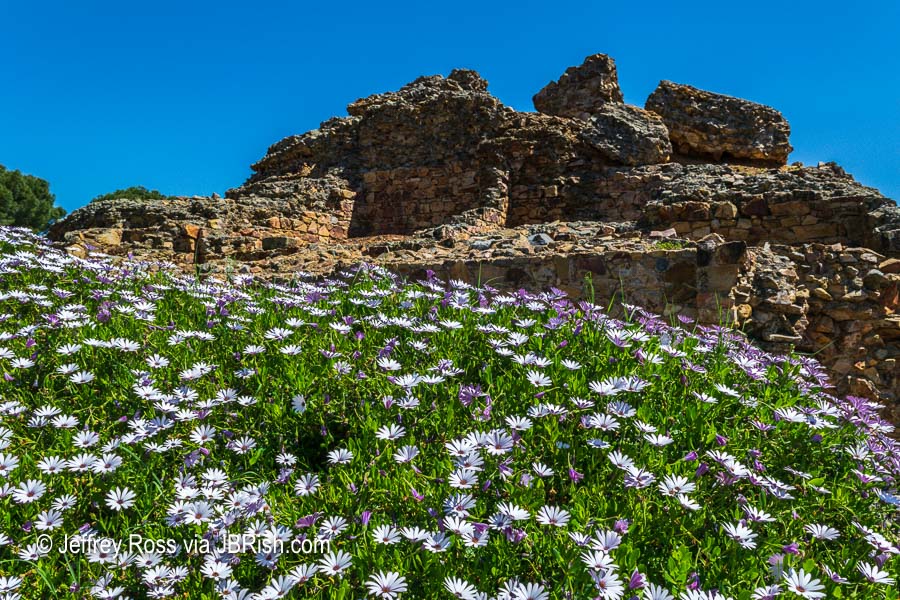
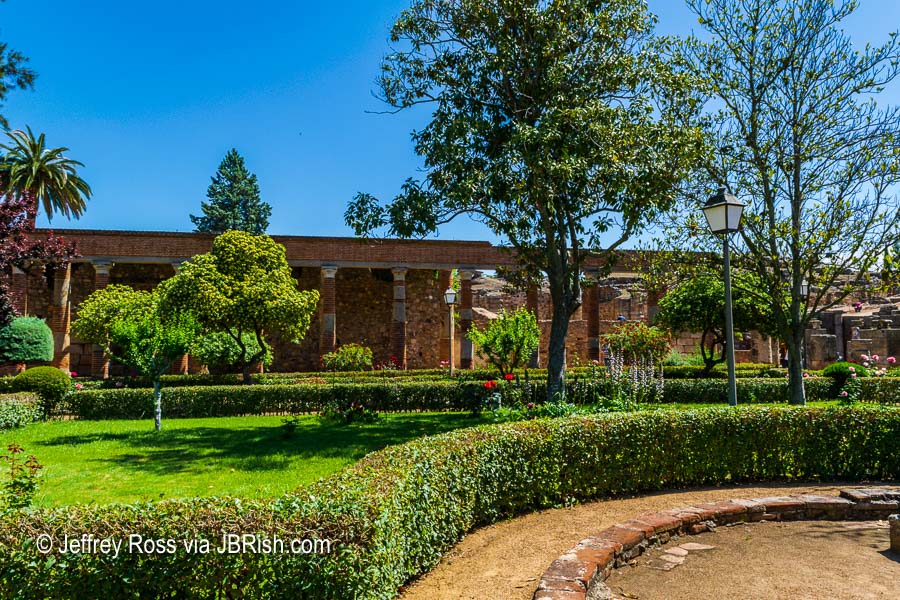
The importance of the UNESCO World Heritage site does note escape visitors as there are reminders throughout the town. This was a view from the front window of our bus. Notice the replica of a Roman column ruin at the center of the traffic circle.
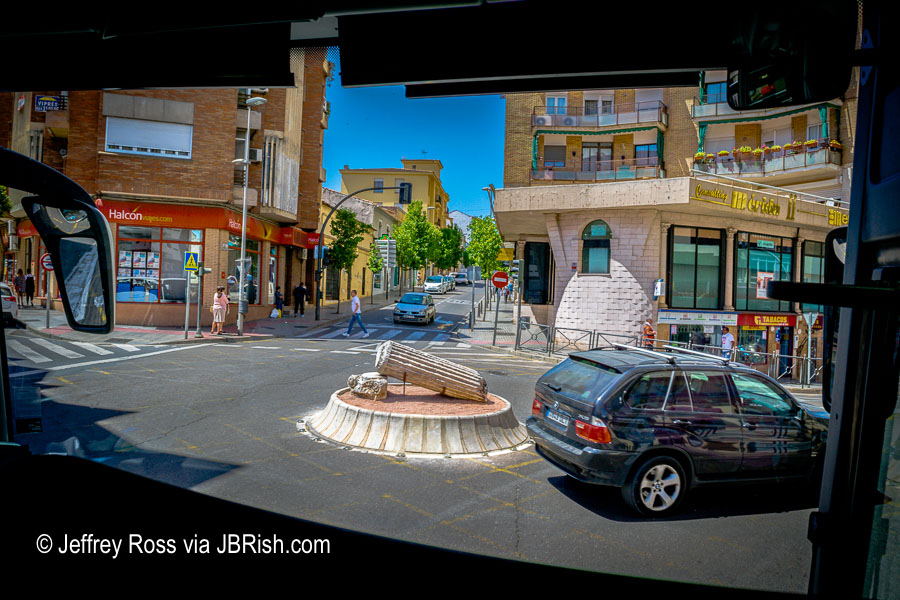
As with many magnificent finds such as this, there is often a yin and a yang. As the town plans for modern buildings, additional ruins are often uncovered. In many instances, construction must then stop and assessments made. This often delays, or in the worst case, cancels any renovations or building. As we can imagine, this must be very frustrating to current residents of Merida wanting to upgrade their properties.

On the way out of town, we passed another impressive sight, a portion of the Acueducto de los Milagros (Miraculous Aqueduct). Only a small portion of the aqueduct bridge stands today. Many of the granite blocks were taken to be used on other structures before the aqueduct was a protected legacy.
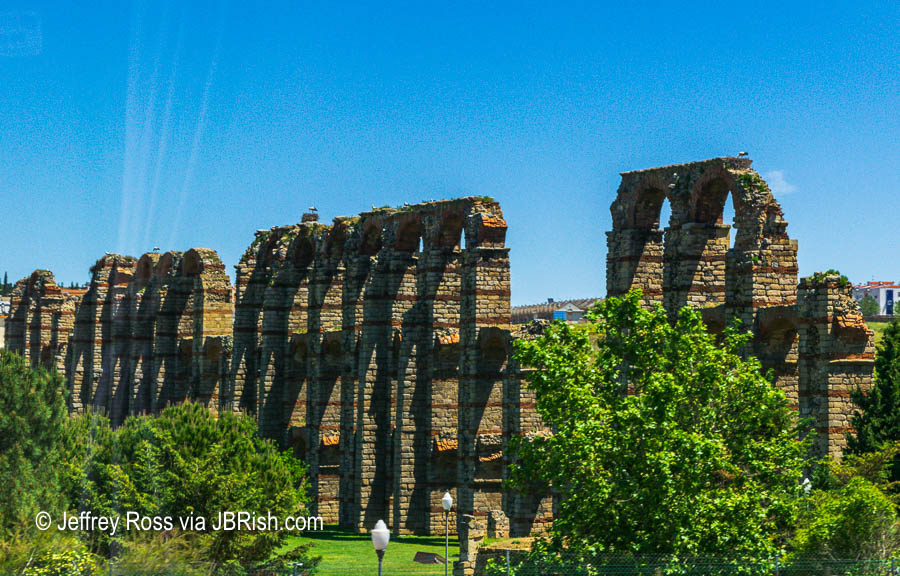
Storks are fond of nesting atop tall structures and being an ancient, historical piece of history does not concern them. The White Stork is given protected status in Spain and many towns make sure they are cared for because they are of interest to tourists.
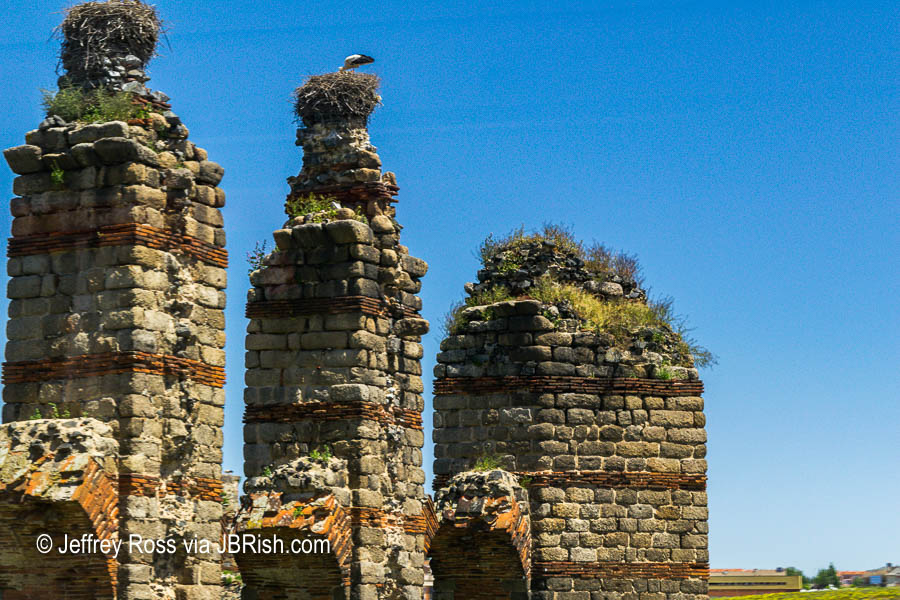
Of course after such an excursion, we needed to stop for lunch. This is the Parador de Merida.
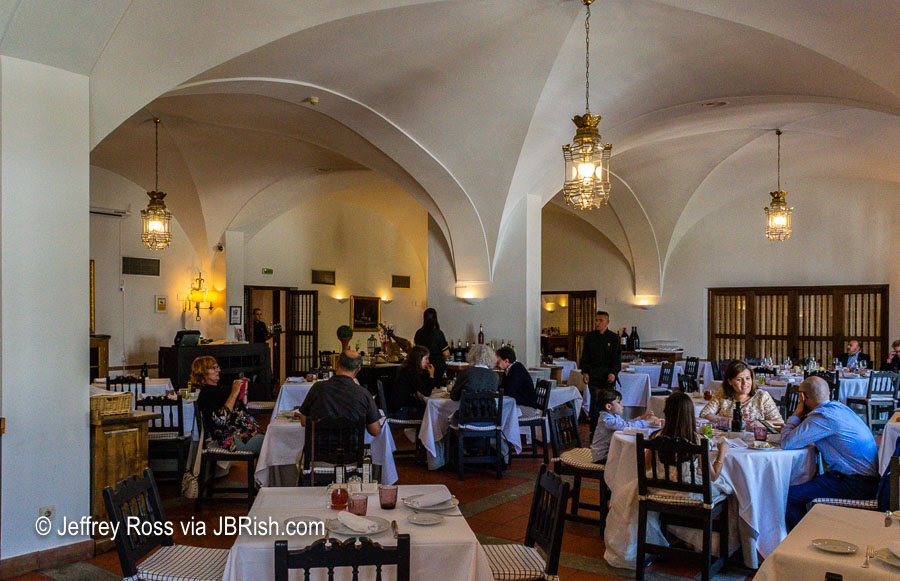
The ride through the countryside to our next stop, Seville, was charming and picturesque.

Even the requisite rest stop provided intersting sights such as large pig legs and other meats offered for sale. One sign is for Paleta Ibérica Bellota, acorn-fed free range pigs. Interestingly enough hams from front and rear legs are differentiated: paleta is ham from the front leg while jamon would be from the rear leg. One famous producer is Fermin in Salamanca, Spain. (read more HERE)
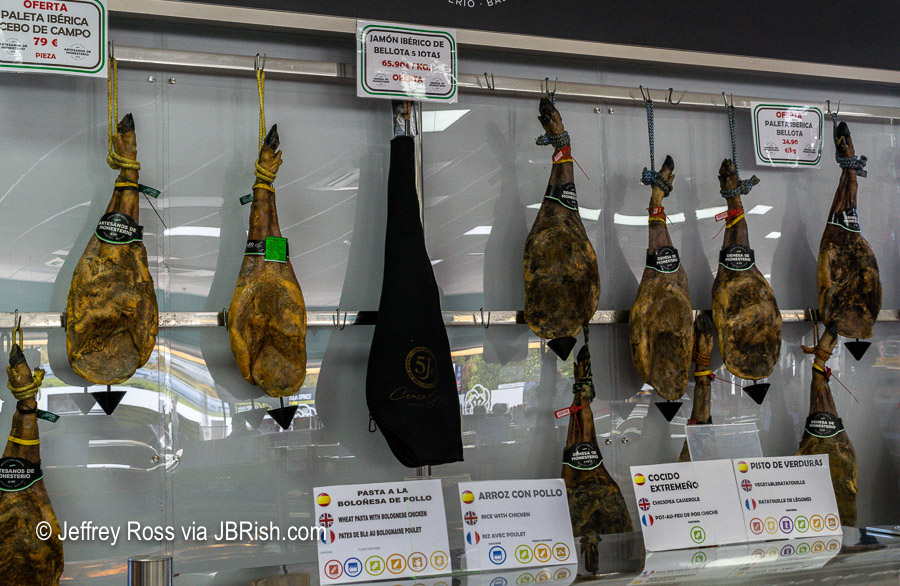
Learn more about The Roman Theatre of Mérida HERE
Next stop, Seville
**********
***************
Continue reading about our trip to Portugal and Spain.
Read more Hiking and Exploration posts HERE
**********
All original content on this blog is copyrighted by Jeffrey B. Ross with ALL Rights Reserved. While reference links back to JBRish.com are appreciated and encouraged, please acquire approval for any reproduction of original content from this website.